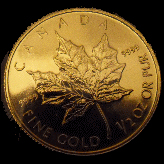Making your First Gold Trade
by Jerry WhiteYou may have heard various commentators making contradictory prognostications about the gold market:
- That gold is in a long-term uptrend resulting from inflation and currency devaluation as the US and European Union print money to pay off their long-term debt.
- That the gold market is a bubble that will burst, resulting in major losses to gold investors.
A bubble or a long-term uptrend?
Oddly enough, both of these views may be valid. The gold price has been rising for several years as investors buy gold to protect their purchasing power, while the dollar and euro sink. The creation of gold exchange-traded funds (ETFs) has made it easy for investors large and small to buy gold with low transaction costs. The current commodities uptrend may last for another few years, and there is nothing on the horizon that will likely bring fiscal discipline to the governments that are spending money and incurring debt, then printing money so they can do more of both.
As the gold price rises, more and more investors may pile into gold in hopes of protecting both their purchasing power and their assets, causing the price to rise at an increasingly rapid pace. Someday, perhaps a few years from now, some big holders of gold will decide to take their profits, leaving the rest in a suddenly falling market with no one to sell to. A bubble.
Before that happens, as in any bull market, the gold price may fall 10% in a week, 20% or even more. This is a normal correction which you should ignore as well as you can. In fact, it is an opportunity to buy more gold. After the correction, the long-term price trend will reassert itself. Normal corrections will likely occur several times over the course of a few years. A long-term rising market based on fundamentals does not protect an investor against steep corrections based on technical factors or human emotions that are part of what makes a market. Commodity markets are volatile.
Yet, there are few alternatives to buying gold for the kind of crisis-hedge that investors want right now. Yes, there are other precious metals as well as other commodities, but they are affected by other factors and some have been more volatile than gold, which may make novice investors especially nervous. Gold is both money and a store of value, and as such it is the best hedge against the decline in value of fiat currencies. Somewhere down the road you should be concerned about getting out, but for now the bigger concern for most is how to get in. That's what this article is about.
The fear of short-term disaster
There is one fact about a rising market price that causes all investors some concern, whether it is gold, crude oil or shares of Apple stock. That is, prices of high-flyers are volatile, and soon after you finally resolve to buy, the price may tumble 10% in a sudden correction, making you look foolish. This fear makes an investor shy about buying, and as a result he or she may end up watching the price rise without having gotten into the market.
With that fear of short-term disaster in the forefront of our minds, let’s see if there is anything we can do to overcome it and participate in what may prove to be the continuing long-term rising trend of gold. (I say 'may prove to be' because no one has a crystal ball.)
The gold market
The gold market is dominated by large-player interests — both professionals and institutions — including gold producers, central banks, bullion banks, hedge funds and large investors. Transactions may be large and executed over a period of time to minimize the impact of a large purchase or sale.
The center of the gold market is London, as it has been since the early 18th century when London wrested the title from Amsterdam. Amsterdam had become the hub of the European commodities trade two centuries before, after taking the market from Antwerp.
Around 1700 gold was discovered in the Portuguese colony of Brazil. By the 1720s, Brazil was producing 500,000 ounces a year as the world’s chief gold-supplier. Large amounts of Brazilian gold found its way to London via Portugal, which paid for English woolens with gold coins that the British called moydores. The discovery of gold in California, Australia and later South Africa, all English-speaking, cemented London's position in the 19th and 20th centuries.
London trading today
Today, London's time-zone facilitates trading with Asia, the Middle East, Europe and America, all of which look to London for price discovery by means of the morning or afternoon gold fixing. The fixings are auction markets conducted by dealers who gather their customers' orders and arrive at a single transaction price at which all the buyers' and sellers' demands for gold are satisfied at that moment. Gold fixing prices are published in dollars, Sterling and euros.
During daily trading outside the fixings, individual trade quantities may be very large, ranging from 1200 ounces up to several thousand, with loco London gold often delivered through an accounting entry on a dealer's books rather than by delivering physical bars — for trading convenience. Since gold is actually rather useless (or at least impractical), few traders actually need the physical bars, which in London are called good delivery bars that weigh about 400 ounces each. Each bar has a value of over $500,000. So the bars remain in the vaults of the dealers or the Bank of England, and book entries of debits and credits reflect their changes in ownership.
An important exception are the Asian markets, particularly the large markets of India and China, where having physical gold in hand is important. Much of this physical gold is fabricated into jewelry and given as gifts during the wedding and holiday seasons.
While the gold market can be volatile, with swings during Asian, European and American trading, a substantial amount of gold is priced on long-term contracts basis the fixings. As an example, a gold producer may sell to a dealer a half ton of gold (16,000 ounces) — a large amount — but it will be priced at the average of the London morning fixings for the month. If there are 22 business days in the month, then 1/22nd of 16,000 ounces will be priced each day, just 727 ounces per day. Many such pricings, both buying and selling, go on each month. They tend to lend stability to the gold market price.
Arbitrage
The gold market trades 24 hours a day. During US market hours, the center of the commodities markets are New York and Chicago.
The Comex exchange in New York trades contracts of 100 ounces of gold, a convenient enough amount to attract substantial interest by American speculators and hedge funds, as well as by dealers, institutional investors like pension funds, and trade interests (producers and consumers). Bullion dealers in New York arbitrage the loco London dealer market, gold exchange traded funds (ETFs) and Comex, keeping their prices in line.
Overcome your fear
Given the risk that the market price will suddenly fall, indeed that it could fall for five or 10 days in a row, how does a would-be long-term investor muster the courage to part with his or her dollars to buy gold? One answer is that a month or so from now those hard-earned dollars will buy fewer gallons of gasoline, whereas the gold price just might rise to compensate.
Yet, peaks and valleys happen in any market, and one way to assure that you are not making a bad trade with all your money is to divide your dollar-stake into thirds. Whether you choice of investment vehicle is gold coins, bars, gram-gold, an ETF, mining stock or a mixture, buy one-third of the investment today, one-third 3 or 4 weeks from now, and the last third 6 or 8 weeks from now, regardless of price. The timing decision is then made based on a rule, which will help you overcome your fear. In 1-1/2 or 2 months you will have completed your first gold trades and be fully committed. Many investors accumulate amounts of gold month after month regardless of price. Novice investors should avoid leverage. Don’t borrow to buy gold, and don’t buy futures contracts.
Will you make money?
No one can tell you that. If the market price rises between the time you buy and the time you sell, you will make money. If it falls, you will lose. Prices will rise and fall along the way. But if your purpose for buying gold is to hegde your loss of purchasing power due to inflation, then the daily gold price will be of no consequence to you.
I am not advising you to buy. I am providing you with more information about the market than you had before. This information is for long-term investors who can afford to lose much of their entire stake. Certainly if you don’t have enough money for next month's rent, you have no business making any sort of investment.
One additional caveat: Do not become so enamored of gold — or of any investment — that you go overboard with your purchases. Depending on your situation, limit your stake in precious metals to a maximum of 10% to 30% of your investment portfolio. Never put all your eggs in one basket and never borrow to buy precious metals. My investor’s guide includes specific recommendations for investors with different risk-reward profiles that will apply to your first gold trade.

Precious Metals Investor’s Guide from TradersGame.com
To learn to invest in gold and silver, avoid pitfalls and save money by buying the form that is appropriate rather than one a salesman wants to sell you, read our precious metals investor’s guide, How to Buy Gold and Silver Today. Read it tonight and start protecting your purchasing power tomorrow.
Articles
Who Sets the Prices of Precious Metals?
Why a Rising Gold Price is Bad News
Hyperflation and Gold: Losing Faith in the Dollar
Invest in Gold to Preserve Your Purchasing Power
Buying Gold to Meet your Investment Goals
Pitfalls to Avoid When Investing in Gold
Making your First Silver Trade
Investing in Platinum-Group Metals
Will the US Government Confiscate Your Gold?

